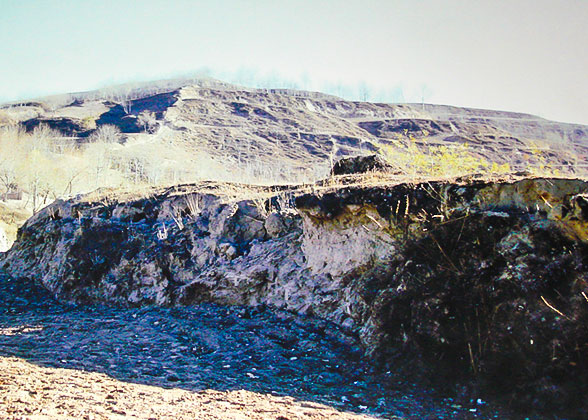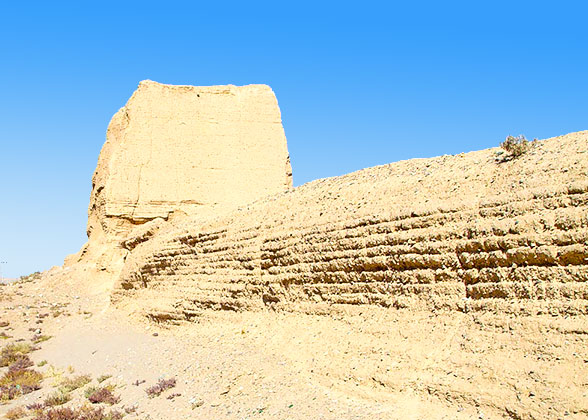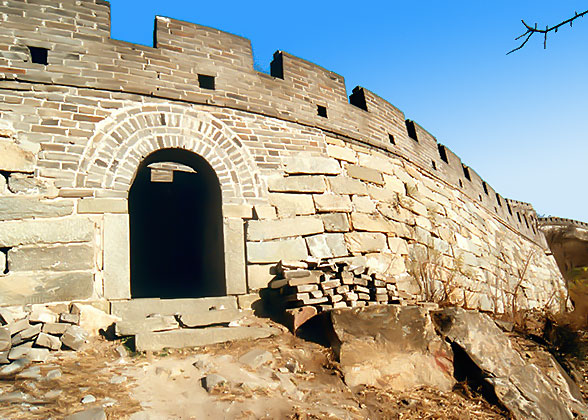Great Wall Terrain & Structure
The terrain the Great Wall traverses is complicated and varied. Long rivers, steep mountains, lofty cliffs, boundless desert, and vast grasslands all witness the imposing presence of the Great Wall.
 |
| Great Wall of Qin Dynasty, Lintao, Gansu |
It followed the basic characteristic of Qin Wall, that is, to build the wall according to the local conditions and used local materials. The difference lies in the constructional types. The Han Wall mainly wound through grasslands where big stones were not available. The compressed earth construction was favored. For example, in Dunhuang, where large amount of bulrush, poplar, red willow and dogbane grew, these were used for wall construction. The branches of these plants served as groundwork which was covered by a layer of sun-dried mud bricks mixed with grit and above was the rammed bulrush. On average, the thickness of the bulrush layer measured 1.6 to 2.0 inches and the grit layer measured 7.9 inches. Remnants of this work remain till this day. The willow branch and bulrush could bear strong tension, and stones and grit were not easy to be destroyed after being compacted in layers, so the wall became rather solid.
 |
| Great Wall of Han Dynasty |
It is the solidest and most complete one compared with walls in other dynasties. The Ming Dynasty drew the experience from the previous dynasties when they built the wall. More important military fortifications were added on the wall. In flat areas, outside the wall, big wide moats were dug to make approach difficult.
 |
| Great Wall of Ming Dynasty |
At the interval of 109.4 to 218.7 yards, there located a terrace which protruded from the wall. It was especially designed for close combat. Once enemies were camped outside the wall, soldiers on guard could shoot from the terrace. They could take the advantage of a commanding height to prevent enemies from putting ladders against the wall to attack the city. At certain distances, there was a fortress. It was used for storing up army supplies or stationing troops who controlled a section of the wall nearby and carried out the defense tasks along the wall.
Watch towers were often square in shape and towered above the top of the wall about 13.1 feet. While at places of strategical importance, the watch towers were round and raised high above the wall. They were built for soldiers to live in, to store food and weapons for a long period of time. The Ming Dynasty still raised smoke to warn of dangers. Besides, the boom of cannon was added to strengthen the alarm effect. In ancient times when telephone and wireless communication were not available, this method to transfer the military message was obviously fast. Beacon towers in Ming Wall were also used for ensuring the safety of ambassadors, supplying them with room and board and offering forage for their horses.